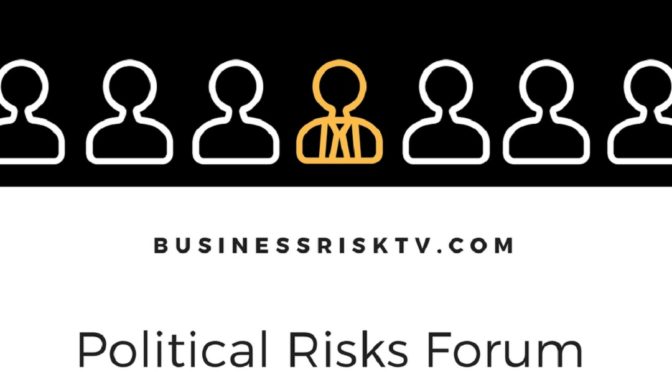The Looming Shadow: Navigating the Labyrinth of Geopolitical Risks in 2024
The world in 2023 stands at a crossroads. As the shadow of a global pandemic recedes, new anxieties grip the international landscape. Tensions simmer in familiar hotspots, while emerging threats whisper on the horizon. In this labyrinth of uncertainties, one question burns bright: what will be the greatest geopolitical risk in 2024?
Predicting the future is a fool’s errand, but anticipating and preparing for potential storms is the essence of responsible leadership. While pinpointing a singular “greatest” risk might be an oversimplification, we can examine four contenders each capable of casting a long, disruptive shadow in 2024:
1. The Dragon and the Tiger: Escalating Tensions in the Taiwan Strait:
The Taiwan Strait, a narrow waterway separating mainland China and the self-governing island of Taiwan, has long been a tinderbox of geopolitical tension. China, viewing Taiwan as a breakaway province, refuses to renounce the use of force in achieving reunification. Taiwan, on the other hand, maintains robust democratic institutions and enjoys strong international support, particularly from the United States.
In 2024, several factors could elevate the risk of confrontation in the Taiwan Strait:
- Increased Chinese military assertiveness: Beijing’s recent actions, like frequent incursions into Taiwanese airspace and military drills simulating island invasion, signal a growing determination to assert its dominance.
- Taiwan’s presidential elections: Scheduled for January 2024, the elections could see the victory of a pro-independence candidate, further inflaming Chinese grievances.
- Miscalculations and accidents: Unforeseen incidents, either military mishaps or deliberate provocations, could spiral into an unintended conflict with devastating consequences.
The potential ramifications of a Taiwan Strait conflict are immense. A full-scale war could trigger a massive humanitarian crisis, disrupt global supply chains, and plunge the world into a new era of Cold War-esque tensions.
2. The Ukrainian Quagmire: War’s Long Shadow and Spillover Risks:
The ongoing war in Ukraine continues to cast a long, dark shadow over Europe and the global order. Even if a resolution were reached in 2024, the war’s legacy will extend far beyond the battlefield. Here are some potential avenues for risk:
- Protracted conflict and instability: Even a ceasefire wouldn’t guarantee lasting peace. A simmering conflict in Ukraine could destabilise the region, create a humanitarian crisis, and strain international relations.
- Spillover effects into neighbouring countries: The war could trigger unrest or refugee crises in bordering nations like Moldova, Belarus, and the Baltic states.
- Weapons proliferation and escalation: The possibility of Russia or Ukraine resorting to unconventional weapons or dragging other powers into the conflict cannot be entirely discounted.
The war in Ukraine has already disrupted the global food and energy markets, impacting economies worldwide. A further escalation could exacerbate these vulnerabilities, leading to economic hardship and political instability in vulnerable regions.
3. Iran’s Nuclear Tightrope: Unveiling the Bomb or Stepping Back from the Brink?
Iran’s nuclear programme remains a contentious issue, raising concerns about its potential for weapons development and regional instability. In 2024, the trajectory of Iran’s nuclear ambitions could significantly impact the geopolitical landscape:
- Collapse of the JCPOA: The 2015 Joint Comprehensive Plan of Action, which aimed to curb Iran’s nuclear programme in exchange for sanctions relief, currently hangs by a thread. Its collapse could pave the way for Iran to accelerate its nuclear activities,raising the specter of a military strike from Israel or the United States.
- Internal political dynamics: The political climate in Iran could influence its approach to the nuclear issue. Hardliners gaining ascendancy could increase the risk of confrontation, while moderates gaining ground could offer an opportunity for renewed diplomacy.
- Regional proxy conflicts: Iran’s support for Shia militias across the Middle East could exacerbate existing tensions and potentially trigger wider regional conflicts.
A nuclear-armed Iran could reshape the Middle East power dynamics, posing a significant threat to Israel and its allies. It could also trigger a nuclear arms race in the region, further destabilising an already volatile part of the world.
4. Climate Change and the Looming Resource Wars:
While traditionally considered a non-traditional security threat, climate change is increasingly recognised as a potential driver of geopolitical instability. In 2024, its impact could become more pronounced through:
- Resource scarcity and competition: Water scarcity, food insecurity, and energy shortages driven by climate change could exacerbate existing resource competition, potentially leading to conflicts over crucial resources.
- Mass migration and displacement: Climate-induced migration could strain social and political systems in receiving countries, potentially triggering unrest and xenophobia.
More Business Risk Management Articles Videos and Risk Reviews
Promote and Market Your Business

Business Risk Management Club